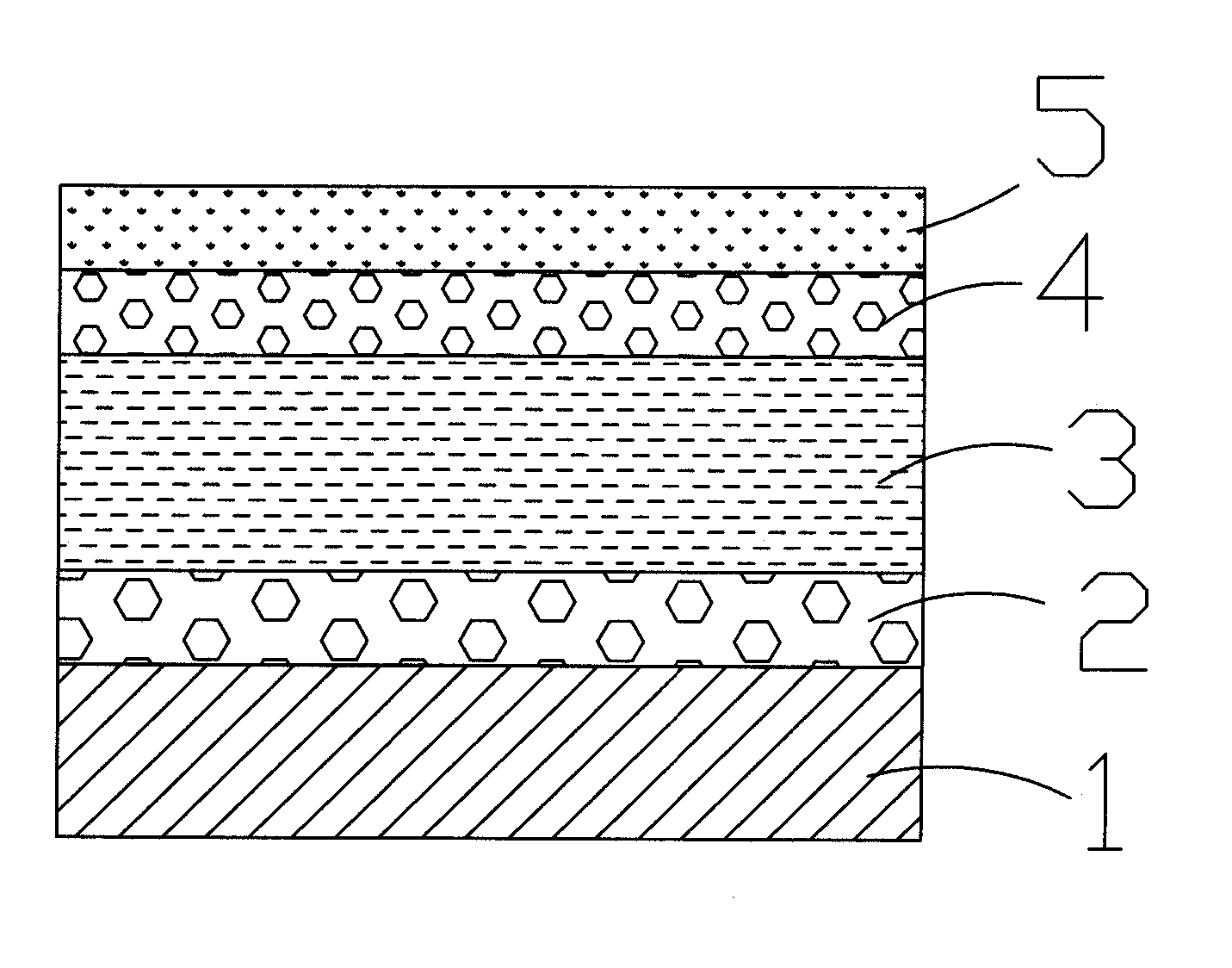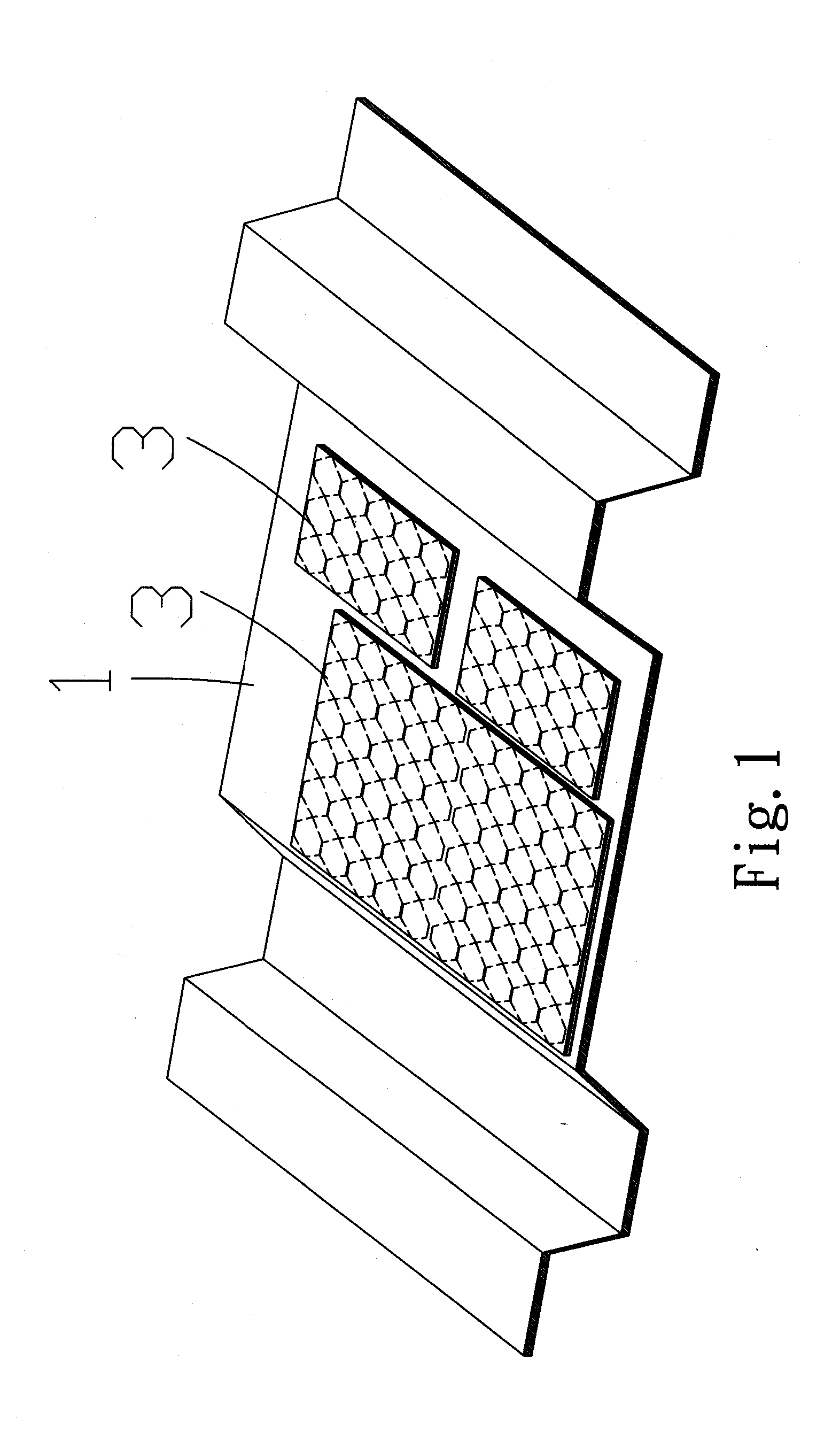Method for manufacturing photovoltaic module formed on corrugated-sheet building material
a technology of photovoltaic modules and building materials, applied in the field of building materials, can solve the problems of increasing the cost, adding to the disadvantage of consumer loyalty, and the drawbacks of prior art, so as to save the cost of outer frame and assembly costs, increase the usable area, and reduce the cost
- Summary
- Abstract
- Description
- Claims
- Application Information
AI Technical Summary
Benefits of technology
Problems solved by technology
Method used
Image
Examples
Embodiment Construction
[0012]Referring to FIG. 1 through FIG. 4, the present invention provides a method for manufacturing a photovoltaic module formed on a corrugated-sheet building material. The method comprises the steps of: (step 1) shaping a board to function as a base board 1 in a manner that the board thus shaped takes on a corrugated-sheet shape and therefore not only has thereon alternating grooves and ridges but also a processing surface defined between a said groove and an adjacent said ridge; (step 2) forming a photovoltaic module on the processing surface of the base board 1 by stacking, including putting a bottom adhesive film layer 2 on the processing surface of the base board 1, putting a photovoltaic layer 3 on the bottom adhesive film layer 2, putting a top adhesive film layer 4 on the photovoltaic layer 3, and finally putting a condensing film layer 5 on the top adhesive film layer 4; (step 3) rolling the photovoltaic module and the base board 1 against each other at 130˜180° C. to effe...
PUM
 Login to View More
Login to View More Abstract
Description
Claims
Application Information
 Login to View More
Login to View More - R&D
- Intellectual Property
- Life Sciences
- Materials
- Tech Scout
- Unparalleled Data Quality
- Higher Quality Content
- 60% Fewer Hallucinations
Browse by: Latest US Patents, China's latest patents, Technical Efficacy Thesaurus, Application Domain, Technology Topic, Popular Technical Reports.
© 2025 PatSnap. All rights reserved.Legal|Privacy policy|Modern Slavery Act Transparency Statement|Sitemap|About US| Contact US: help@patsnap.com



